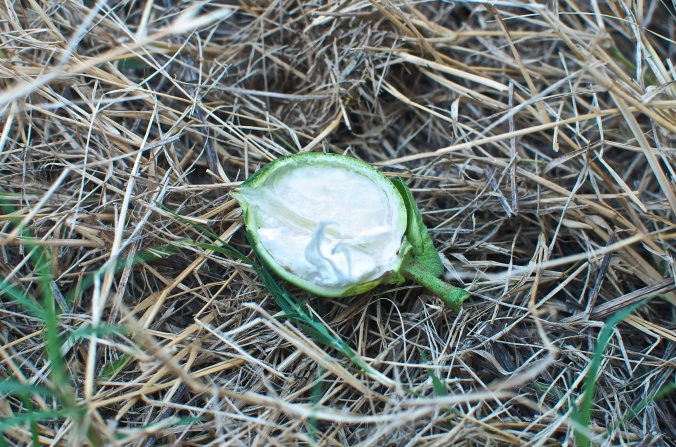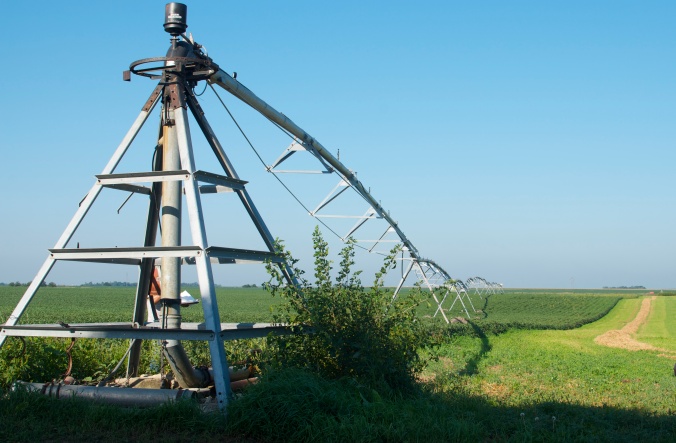
(Abengoa Bioenergy Plant, York, Nebraska – Corn Ethanol Production)
Garnering little media attention amidst all the commotion surrounding the large government shutdowns and the enactment of Health Care Reform Law, on October 1st, 2013, after a year of congressional disagreement and partisan paralysis, the US Farm Bill officially expired (Thornton, 2013).
In consequence of this expiration, funding for current farm and nutrition support programs face immediate or impending diminishment (Lucht, 2013). Moreover to fill the current farm bill void, US policy calls for the reinstatement of the permanent legislative Farm Bill of 1949, despite its radically high price supports, outdated market quotas (Nixon, 2012) and the subsequent potential to raise global commodity price floors and necessitate governmental purchase of excess commodity supply (Schweikhardt, 2013).
At the centre of this political stalemate, or the Farm Bill Debate as it has been termed,is pressure to reduce fiscal spending and ideologically influence differences of opinion on where and how much to cut funding (Nixon, 2013). On one hand, important questions are being raised about the extent to which taxpayer money is being used to pay for farm programs during a period when the average farm household income is greater than the average non-farm household income (Stewart, 2013). On the other hand, important questions are also being raised about the consequences of integrating both farm and nutrition programs under one Farm Bill (Weisman and Nixon, 2013).
(4000 acre irrigated soy and corn farm near Norfolk, Nebraska)
For the American agricultural industry the past decade has been one of record farm incomes, record average farm net worth and record industry net worth (Schnepf, 2013). In light of this and in lack of being conditioned on a payment entity’s ability to generate income (Zulauf and Schnitkey, 2013), agricultural “safety net” programs have become an inequitable system of income transfer, in which the majority of subsidy monies go to the largest farms, increasing their ability to secure loans and land and giving them a comparative advantage over small farms and start-ups.
(Rice Production in the Bootheel of Missouri)
In acknowledgement of the system’s failure, proposed reforms are curbing the use of the financially wasteful and even fraudulent system of direct payments (Boles, 2013), in which payouts were made on -only- certain crops according to obscure historical acreage and production values (Brooks, 2013). In their place subsidized crop insurance programs have gained popularity (Glauber, 2012).
Crop Insurance programs, however, are plagued by some of the same demons as direct payments. Under the 2008 Farm Bill, crop insurance was uncapped (Zulauf and Schnitkey, 2013): and because increased commodity prices and farm incomes corresponded with increased subsidy levels and federal insurance costs, insurance provided large subsidies in years of less need (Brooks, 2013), becoming the most expensive element in farm policy (Glauber, 2012).
(Kevin Brooks, Agricultural Consultant, discusses the Farm Bill with University of Guelph Students)
So in light of the continued struggle to attain fiscal responsibility while providing a farm “safety net,” the question must be asked if whether or not, in search of an equitable and transparent farm risk management system, can the U.S. really afford unlimited and untargeted subsidies? Moreover, can they really be justified at a time when there are drastic cuts to vital funding for other programs, such as those that encourage conservation agriculture and rural development (Reis, 2013)?
Internationally, given the US’s criticism of barriers to global free-trade, many countries view U.S. farm subsidies as “too much to stomach.” This is because farm subsidies enable increased production and can consequentially lead to market distortion (Beattie and Lamont, 2013; Simon, 2002). In some instances, as it did after an ongoing 10 year dispute with Brazil over cotton payments, subsidies and consequential market distortion have lead to lawsuits at the World Trade Organization (Ridley and Devadoss, 2012).
(University of Guelph Student walking in the cotton fields in the Bootheel region of Missouri)
To prevent market distortion, governments that desire to support their agriculture sectors can use annual supply and control programs, enabling them to limit production when policy distortions increase production and threaten to decrease global prices. Although the US has elected not to enact control restraints on most crops, in order to maximize international diplomacy, cooperation and trade in the future they will likely have to either accept price or revenue targets that move with the market or couple fixed targets with supply control to limit production distortion (Zulauf and Schnitkey, 2013).

(Mid-West Cotton Boll)
According to Dr. David Schweikhardt from Michigan University, at 20 billion dollars annually, government spending on farm programs represents one fifth of the spending that occurs as a result of all Farm Bill Programs. The other four fifths of spending is on various nutrition support programs – like food stamps. This union of farm and nutrition programs represents an effort to create a coalition between urban and rural populations serving both groups’ interests (2013). For society as a whole programs that protect farmers are linked to increased environmental stewardship, food security and national health, while programs that increase nutritional health increase social welfare and protect the US from potentially crippling health care costs.
Recently this coalition, however, is under tremendous political pressure as rural legislators challenged nutrition programs on ideological value (Schweikhardt, 2013) and asked for more than 20.5 Billion Dollars in cuts to the Supplemental Nutrition Assistance Program (Wasson, 2013). Despite being voted down because different congressional groups viewed it as either too high or too low (Alexander, 2013), the debate has rallied interest in stand-alone agribusiness subsidy and nutrition bills.
Although the stand-alone bills may potentially threaten a holistic view of food production and health in policy, they may also offer some clarity in an otherwise increasingly complex legislative document. More importantly, the separation may allow for the open debate of each bill on its own merits instead of having those in favour of subsidies “dictating bill outcomes at the expense of the average taxpayer” (Alexander, 2013).
(Invasive Flowers in an American Pasture)
It’s no secret that a cost-effective, transparent and accountable farm safety net is what is needed. So, all the political posturing has to stop. Firstly, the outdated permanent law “that enables the farm lobby to pressure Congress to pass inadequate farm subsidies”(Alexander, 2013) has to go. Secondly, agricultural subsidy programs need limitations and accountability parameters that insure their effectiveness as risk management programs but prevent them from being a form of selective income transfer (Schweikhardt, 2013). Thirdly, US farm policy must accept that market responsive revenue targets or supply and control programs are necessary for equitable trade (Zulauf and Schnitkey, 2013). Fourthly, the nutrition and agricultural portions of the must be separated in order that each be evaluated individually. And finally, the maligned direct payments need to be forever eliminated and the monies saved need to be redirected somewhere where they better serve the average tax-payer (Alexander, 2013).
Nonetheless, despite potential areas for farm bill improvement, the path to fiscally responsible farm and nutrition programs requires relief from current political dysfunction. After a year of political gridlock, the necessity of the fiscal cliff extension and current farm bill no-man’s land, that means (as noted by Dr. David Schweikhardt) addressing the “serious mismatch between political parties which have become as vehemently adversarial as parliamentary parties and a governing system that, unlike a parliamentary democracy, makes it very difficult for majorities to act”(Mann and Ornstein. 2012).
References:
Alexander, R. (2013). How to Achieve Real Farm Bill Reform. US News Opinion. Available Online at: http://www.usnews.com/opinion/blogs/economic-intelligence/2013/07/16/ aweak-farm-bill-debate-pitting-agriculture-subsidies-against-food-stamps [accessed Aug,28th, 2013]
Beattie, A. and Lamont, J. 2013. “US farm bill plan arouses African fury.” Financial Times 24 May 2002: 9.
Boles, C. (2013, 6, 10). Senate Passes Bill to End Direct Payments to Farmers. The Wall Street Journal. Politics and Policy. Available online at: http://online.wsj.com/news/articlesSB10001424127887324904004578537850230355808 [accessed Oct. 9th, 2013]
Brooks, K. (2013). The U.S. Farm Bill. Lecture Conducted From Peora, Illinois.
Glauber, J. 2012. The Growth Of the Federal Crop Insurance Program, 1990-2011. American Journal of Agricultural Economics. 95 (2): 482-488
Lucht, G. (2013, 10, 01) Shutdown, farm-bill expiration hit farmers with political reality. Iowa Farmer Today. Available online at: http://www.iowafarmertoday.com/news/crop shutdown-farm-bill-expiration-hit-farmers-with-political-reality article_b8a738ca-2add-11e3-bf49-0019bb2963f4.html [accessed Oct. 9th, 2013]
Mann, T. and Ornstein, N. 2012. It’s Even Worse Than It Looks: How the American Constitutional System Collided With the New Politics of Extremism. Thomas E. Mann and Norman J. Ornstein; New York.
Nixon, R. (2012, 12, 6). Stalled Farm Bill is Pushed for It’s Savings. The New York Times: pA21(L)
Nixon, R. (2013, 9, 19). House Republicans Pass Deep Cuts in Food Stamps. The New York Times: p A21
Reis, M. (2013) The uncertain future of Farm Bill Conservation programs. Harvard Environmental Law Review. Available Online at: http://www3.law.harvard.edu/journals elr/2013/09/17/the-uncertain-future-of-farm-bill-conservation-programs/[accessed Oct.9th, 2013]
Ridley, W. and Devadoss, S. Analysis of the Brazil- USA cotton dispute. Journal of International Trade Law and Policy. 11 (2): 148-162
Schnepf, R. (2013). U.S. Farm Income. Congressional Research Service. Available online at: http://www.fas.org/sgp/crs/misc/R40152.pdf [accessed Oct. 9th, 2013]
Schweikhardt, D. (2013, 9, 20) The U.S. Farm Bill: Past, Present, and Future Issues. FARE TalkPod Casts. The University of Guelph. Available online at: http://www.uoguelph.ca/fare FARE-talk/index.html#bill [accessed Oct. 9th, 2013]
Simon, B. (2002, 5, 23) Washington’s farm bill adds to rising Canadian anger over trade. The New York Times: A9
Stewert, J. (2013, 7, 19). Richer Farmers, Bigger Subsidies. The New York Times: pB1
Thornton, M. (2013, 10, 2) A tale of two farmers: harvest, the farm bill and political paralysis. Farm Bureau News. American Farm Bureau Federation. Available online at: http:/ fbnews.fb.org/Templates/Article.aspx?id=37648 [accessed Oct. 9th, 2013]
Wasson, E. (2013, 10, 5) House farm bill cuts food stamps by 20.5B. On The Money, The Hills Finance and Economy Blog. Available online at: http://thehill.com/blogs/on-the-money agriculture/298991-lucas-releases-draft-farm-bill-saving-40-billion [accessed Oct. 9th, 2013]
Weismann, J. and Nixon, R. (2013, 7, 11) House Republicans Push Through Farm Bill, Without Food Stamps. The New York Times: A14
Zulauf, C. and Schnitkey, G. (2013). Farm Bill Conference Issues. Farmdocdaily. Department of Agriculture and Consumer Economics, University of Illinois. Available online at: http:/farmdocdaily.illinois.edu/2013/08/farm-bill-conference-issues.html




